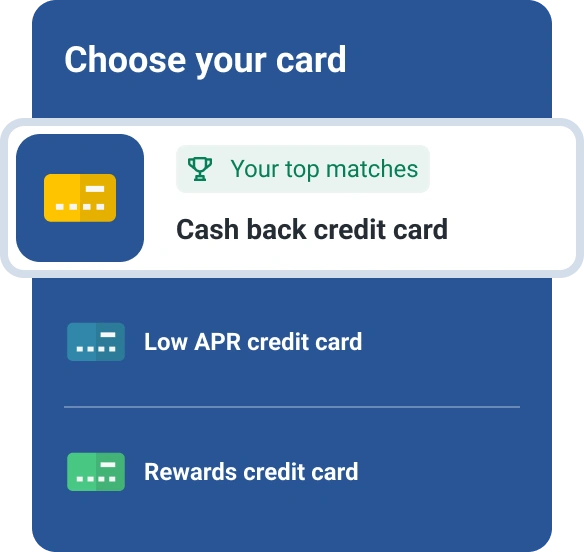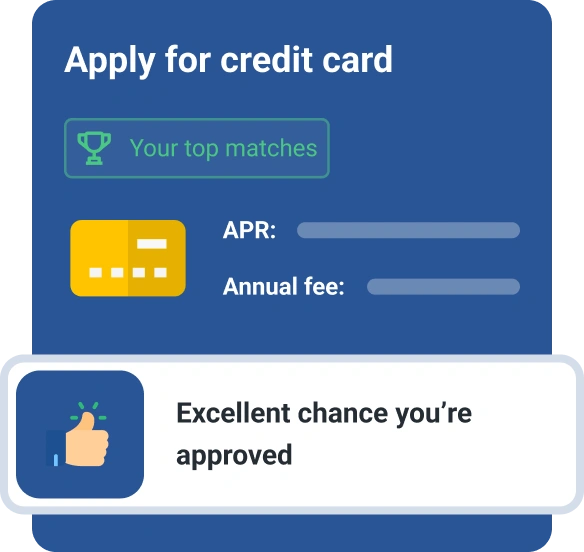10 Things to Do When You Get a New Credit Card
Quick Answer
To get the most from your new credit card, crucial steps before using it include setting up autopay, creating an online account, reviewing the terms and conditions and understanding how rewards programs work.

Getting a new credit card can be exciting, but it's also an important responsibility. If not used carefully, a credit card could end up costing you more than necessary. Fortunately, taking a few simple actions before you start using your new card can help you get the most from it and avoid the worst outcomes. After you get a new credit card, follow these 10 steps to maximize your card's benefits, security and value.
1. Activate Your New Card
Before using your credit card for the first time, you'll need to activate it. You'll find directions for doing so on a sticker on the front of the card or in the acceptance letter that accompanies the card when you receive it in the mail.
Activating a card only takes a minute or two. Typically, you can activate the card in two ways:
- Call the phone number on the activation instructions sticker and follow the automated prompts.
- Visit the URL listed on the sticker and follow the directions on the website to activate your card.
Keep your card close at hand during the activation process in case you need to enter any information that's on it.
2. Sign Your New Card
Once you've activated your card, turn it over and sign the signature box—an empty white or gray space provided for this purpose—on the back. Sign the card the same way you normally do, and give the signature time to dry so it doesn't smear.
Comparing signatures on credit cards to signatures on receipts was once the best way businesses fight fraud. If the signature box on your credit card is blank, the card is technically invalid, and the merchant might decline the transaction.
3. Create an Online Account
Next, set up an online account with the financial institution that issued the card. You'll use this account to manage your new credit card using your credit card's mobile app or website. With this account, you can usually:
- Check your current balance
- See your credit limit and available credit
- View statements
- Schedule payments
- See and redeem rewards
- Review recent transactions
- See upcoming due dates and minimum payments
- Lock your card
- Request a new card
- Set up alerts and security features
- Check your credit score
4. Set Up Autopay
If a credit card payment is 30 days or more past due, it can be added to your credit report as a late payment. Because payment history is the most important factor in your credit score, even one late payment can negatively impact your credit. Pay late, and the credit card issuer may charge late fees or institute a higher interest rate.
Avoid fallout from late payments by setting up autopay through your online account or the card's mobile app. Choose the bank account you'll use to make payments and select from the autopay options. These may include:
- Paying the minimum amount due
- Paying the full statement balance
- Paying another amount you choose (which should be at least the amount of the minimum balance)
Once you set up autopay, the selected amount is automatically withdrawn from your bank account every month on the date you've specified. Check your bank account shortly before the auto-payment is due to ensure there's enough money to cover it. Some credit card companies let you schedule multiple auto-payments per month or change payment due dates. This can make it easier to budget: For example, if you get paid twice a month, you could schedule one auto-payment immediately after each payday.
5. Review Introductory Offer Terms
Does your new credit card include a promotional offer, such as a welcome bonus or an introductory 0% annual percentage rate (APR) for purchases or balance transfers? Understanding the details of your intro offer helps you get the most from it.
Welcome bonuses typically give you cash back, points or miles in exchange for spending a certain amount on the card within a certain number of months or billing cycles after you get your card. Review the card's terms to see how much you must spend, the date by which you must spend it and which purchases qualify. (For instance, buying gift cards may not count toward the bonus.)
Before using a card with an introductory 0% APR, make sure you understand:
- Which transactions qualify for the promotional APR. (It may apply to purchases, balance transfers or both.)
- When the promotional APR ends (typically between six and 21 months).
- The standard APR that will be assumed once the intro period is over.
- The time frame for initiating and completing balance transfers.
- Any balance transfer fees (these are often between 3% and 5% of the transferred balance).
- The new APR— penalty APR—you'll be charged if you miss payments.
Even if your card doesn't have a promotional offer, brush up on the card's terms and fees, including annual fees, late payment fees or cash advance fees; APRs for purchases and cash advances; the grace period between the end of the billing cycle and the due date of your monthly payment; and how the minimum payment is calculated.
6. Understand the Rewards Program
If your new credit card offers a rewards program, visit the card issuer's website and read your credit card agreement to learn the following.
- What types of rewards can you earn? Most rewards cards offer airline miles or points, hotel loyalty program points, general points or cash back.
- How can you redeem rewards? You may have options to get cash back as a statement credit, bank account deposit or check, for instance.
- What transactions qualify? Cards may offer rewards on specific types of purchases, such as travel, gas, groceries or dining out. Clarify how purchases are categorized—for example, food purchased at big-box retailers may not count as groceries. Cards with rotating bonus categories offer extra rewards for purchases in certain categories; these usually change quarterly.
- What do you have to do to earn or redeem rewards? Some cards apply cash back to your account balance automatically; others require you to redeem rewards. Rotating bonus category cards may require you to activate your bonus rewards category every quarter.
- Do rewards expire? Note expiration dates so rewards don't go to waste.
7. Activate Benefits
Rewards aside, many credit cards have valuable benefits, such as purchase protection, return protection or extended warranties for products bought with the card. Some cards provide protection for lost or damaged cellphones. Common travel benefits include free access to airport lounges; statement credits for TSA Precheck applications; and insurance that covers trip delays, baggage delays, cancellation, interruption and accidents.
Familiarize yourself with your new card's benefits and any limits or time constraints that apply. Review any requirements for using the benefits; for instance, you may have to pay your cellphone bill with the card to qualify for protection.
8. Update Recurring Payments
Setting up credit card auto payments for recurring bills such as your car insurance, cellphone bill or internet service can prevent late payments and service interruptions—and could even earn credit card rewards. If your new credit card replaces a lost or stolen card, be sure to update the credit card information on file for recurring transactions.
The four major credit card issuers all offer merchants the option to get automatic updates when a customer with a card on file gets a new card from the same issuer. If the merchant in question opts in to this service, you may not have to do anything. Still, you should check your account before your next payment due date to make sure the information has been updated. If not, update it at the merchant's website or by phone.
9. Set Up Credit Card Alerts
Credit cards are among the safest ways to make purchases, but they aren't immune from fraud. To protect yourself, visit your card issuer's website or mobile app to set up account alerts.
Credit card issuers typically offer a variety of alerts to help you spot warning signs of fraud. For instance, you can get alerted to purchases, cash advances, foreign transactions or balance transfers. Report anything unusual (such as a purchase in Paris while you're home in Peoria) to the card issuer immediately.
10. Use Your Card Responsibly
Credit cards can help you or hurt you—it all depends on how you handle them. To use your credit card responsibly:
- Pay your bill on time. Setting up autopay for at least the minimum amount each month builds a record of timely payments that can help improve your credit score.
- Keep credit utilization low. Your credit utilization ratio—the amount of available revolving credit you currently use—is the second most important factor in your credit score. (If you have a $100 balance on a card with a $1,000 credit limit, you're using 10% of your available credit.) Keep credit utilization under 30% to prevent damage to your credit score; to improve your score, keep it below 10%.
- Charge only what you can pay off each month. Even using 10% of your available credit could be too much if you can't pay your balance in full when due. You can carry a balance from month to month on your card as long as you make the minimum payment. However, credit card interest is compounded, so you pay interest not only on the balance, but also on the interest. Compounded interest can multiply rapidly, making debt difficult to manage.
- Keep unused credit accounts open. With a shiny new card in hand, you might plan to close cards you aren't using. But doing so can hurt your credit score. Closing a credit account reduces your available credit, potentially increasing your credit utilization (a key component of your credit scores). Unless a card has a high annual fee, keeping it open is generally a good idea as far as your credit is concerned.
Give Yourself Credit
After you've used your new credit card for a few months, check your credit report to confirm the new account appears and your payments are being reported to credit bureaus. Handling credit responsibly can boost your credit score, making it easier to get more credit in the future. Experian's free credit monitoring service can help you keep track of your credit score—and keep an eye out for identity theft.
Don’t apply blindly
Apply for credit cards confidently with personalized offers based on your credit profile. Get started with your FICO® Score for free.
See your offersAbout the author
Karen Axelton specializes in writing about business and entrepreneurship. She has created content for companies including American Express, Bank of America, MetLife, Amazon, Cox Media, Intel, Intuit, Microsoft and Xerox.
Read more from Karen

